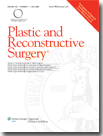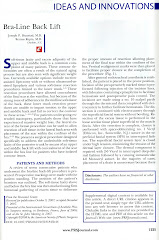The lowly drain must be one of the least appreciated and liked components of the tummy tuck procedure. They are nuisance to deal with early on, they get in the way, they require extra work to take care of and to record the output, and when you can't stand them anymore there is the hesitation or fear of having pulled out.
So are drains necessary following the tummy tuck procedure.
The simple answer is yes. Although there is a tummy tuck technique that does not require drains, lets call it the "French Method" since it got its start in France, the procedure in my opinion takes longer and gives a less powerful result than the tummy tuck techniques that do not require a drain.
The body naturally creates "healing" fluid whenever surgery is performed. When there is a large elevated or undermined area such as in the tummy tuck procedure, the amount of healing fluid is fairly large and there is a large space for it to accumulate if left alone. Some of this fluid will naturally result in scar tissue and/or pseudobursa (see previous post) if not properly managed. To prevent this, we place a drain(s) and use the compression of an abdominal binder to decrease its production, expedited its removal, and allow the abdominal soft-tissue to adhere to the underlying abdominal wall. The vast majority of the tummy tuck procedures including endoscopic, mini, full, extended, reverse, and circumfrential tummy tucks require both a drain and an abdominal binder.
How long is the drain(s) going to stay in?
I always like to answer this question with: "as long as your body needs it and not a day longer". This is an accurate answer since the length of time varies from individual to individual. I prefer to see about less than 25-30 ml of drain output per 24 hours. This usually takes about one week to ten days to achieve.
Doe it hurt to have the drain removed?
Again, it varies on the individual, type of drain, how its placed, etc. I honestly cannot remember the last time a patient did not remark how easy and painless drain removal actually was. I use a flutted or tapered drain, make sure the drain passes easily through the skin during surgery, place numbing medication at the skin site, and usually bring the drain out through the incision or just below it. This not only avoids an additional scar but this area is usually numb in the few weeks following surgery.
In summary, the drain, although annoying at times is necessary to get a great result. We want your tummy to be thin and flat and the extra scar tissue that would build up without a drain is just not acceptable in my opinion.
All the best,








3 comments :
Plz help have very hard knot from bottom of panniculectomy incision to pubic area on left side..has been oozing pinkish thick fluid..right side isn't hard or painful. I'm 3 wks post op
Dear Nana Schultz,
I am sorry to hear about your healing issue. I have posted a reply to your question on my new blog. The link to this reply is shown below:
http://www.scottsdaletummytuck.com/blog/wp-admin/post.php?post=365&action=edit&message=6
All the best,
Dr. Remus Repta
Hi, I’ve had 3 operations now. One abdominoplasty, a large seroma removal above belly button and recently large scar tissue removal above belly button. The surgeon after my last operation said he wasn’t able to take all of the scar tissue away just the subcutaneous. He left the scar tissue on the muscle. Does this mean the front and back walls of the pseudobursa have been removed? The large bulge has gone but tightness and pain remains. I’m hoping that will ease when I take the binder off. He said he couldn’t take scar tissue off the muscle because of risk of hernia. Does this sound right. Thanks abby
Post a Comment